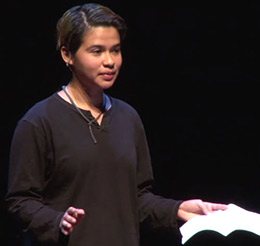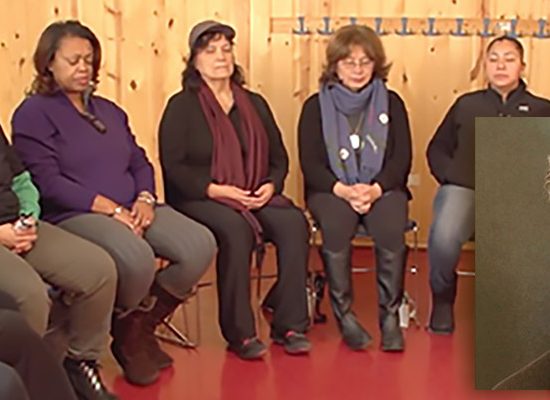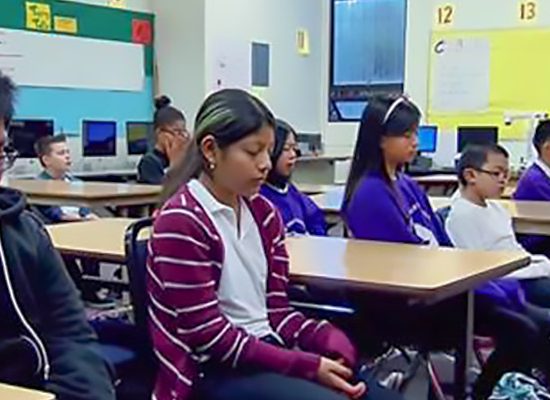A recent TIME cover story announced, “The Kids Are Not All Right.” The constant pressures of studying, social media, and worrying about the future are taking their toll. In 2015, over 6 million teens had an anxiety disorder and 3 million a major depressive episode—and girls are more likely than boys to experience both.
But there are signs of hope. A TEDx talk by two remarkable young women offers good news from a girls charter school in Los Angeles. Here, teen stressors include severe trauma, yet an innovative program involving the Transcendental Meditation® technique is bringing profound relief. These girls are finding inner silence and rising to their true potential.
Being 15 in Central L.A.
“Do you remember what it feels like to be 15?” Naomi Roochnik asks an audience of hundreds at a University of North Carolina TEDx conference. She lists typical challenges like auditioning for a play, being rejected by a crush, studying for SATs.
“Now imagine walking to the corner store and seeing your brother get gunned down by a rival gang member… Imagine having two kids by the time you’re a freshman in high school… Imagine watching your mom get deported,” she continues. “At New Village Girls Academy this is a day in the life of our students.”
“When the lights turn on and eyes open, anxiety has melted away, and students feel refreshed, relaxed, and ready to learn, like someone pushed the reset button on their brain.” —Naomi Roochnik
TM and Wellness Counteract PTSD
As a result, many kids at this school suffer from Post-Traumatic Stress Disorder—something associated with veterans of war, not teenage girls. “How on earth do we expect our young people to learn when their brains are parked chronically in the mode of fight or flight, [with] their sole focus on survival?” asks Roochnik.

Naomi Roochnik addresses an audience of hundreds at a University of North Carolina TEDx conference.
To heal these wounds, the school offers healthcare, counseling, and nature hikes, alongside math, English, and science. But one of the most powerful wellness programs happens with eyes closed. For 15 minutes twice a day, the girls practice the TM® technique.
“When the lights turn on and eyes open, anxiety has melted away, and students feel refreshed, relaxed, and ready to learn, like someone pushed the reset button on their brain,” reports Roochnik, a TM guide at the school. When the lights turn on and eyes open, anxiety has melted away, and students feel refreshed, relaxed, and ready to learn, like someone pushed the reset button on their brain,” reports Roochnik, a TM guide at the school.
Enlivening the Brain with Coherence
The brain functions more coherently during TM practice, explains Roochnik. Alpha waves spread from the back of the brain across the prefrontal cortex. “This is a key point,” she notes. “The prefrontal cortex is like the CEO of the brain. That’s where all the higher-level thinking skills take place—logic, analysis, planning, decision-making, even moral reasoning.”
But severe stress “floods the prefrontal cortex with cortisol, causing it to shut down,” she adds. “What happens when the CEO drops the ball? The fear center, or the amygdala, takes charge.”
When the fear center is in control, it’s impossible for the brain to kick in its higher-level skills. “It can’t. It thinks it’s in a wartime situation. You hear a book drop, and you want to duck for cover,” says Roochnik.
“Every time I meditated, it was like my head stopped exploding with fear and self-doubt and loathing.” —Naomi Roochnik
Creating Peace from Within
Chronic stress contributes to chronic conflict. When the school first opened, fights broke out every day, dropout rates were high, and virtually no one went to college. But the David Lynch Foundation (DLF) offered to help. DLF is a nonprofit organization bringing the TM technique to at-risk populations and underserved communities.
Roochnik became a TM guide for DLF’s school programs in California after experiencing TM’s profound effects in her own life. She had “crippling anorexia, then bulimia,” but within a week of starting TM, she noticed dramatic changes: “Every time I meditated, it was like my head stopped exploding with fear and self-doubt and loathing.”
Once New Village added the TM program, some girls no longer needed antidepressants, and many spontaneously reduced their alcohol and drug use. “And this year we haven’t had a single fight,” reports Roochnik.
“My favorite thing about TM is I can get that solitude without that criticism and anxiety and shakiness… It gives me a silence that is free. It’s just quiet. It’s just quiet.” —Stephanie Guerrero
Empowering Girls with Restful Alertness
The TM technique works by “leaving our students in a state of restful alertness—the ideal condition for learning to take place,” she explains. And learning has taken off. GPAs skyrocketed, and every eligible student has applied to college and gotten in.

Stephanie Guerrero, a New Village junior, learned the TM technique in 9th grade and shared her experiences in the TEDx talk.
Stephanie Guerrero, a New Village junior, is living proof. She learned TM in 9th grade—and never expected she’d be giving a TEDx talk. Before reading her poem on the conference theme of “Bodies: Being Human,” she shares her own TM experience.
“It’s the best tool I have in my life right now, because I can carry it everywhere I go, all the time,” Guerrero says. “My favorite thing about TM is I can get that solitude without that criticism and anxiety and shakiness… It gives me a silence that is free. It’s just quiet. It’s just quiet.”






beautiful thank you
Thank you! What a wonderful Ted Talk presentation.